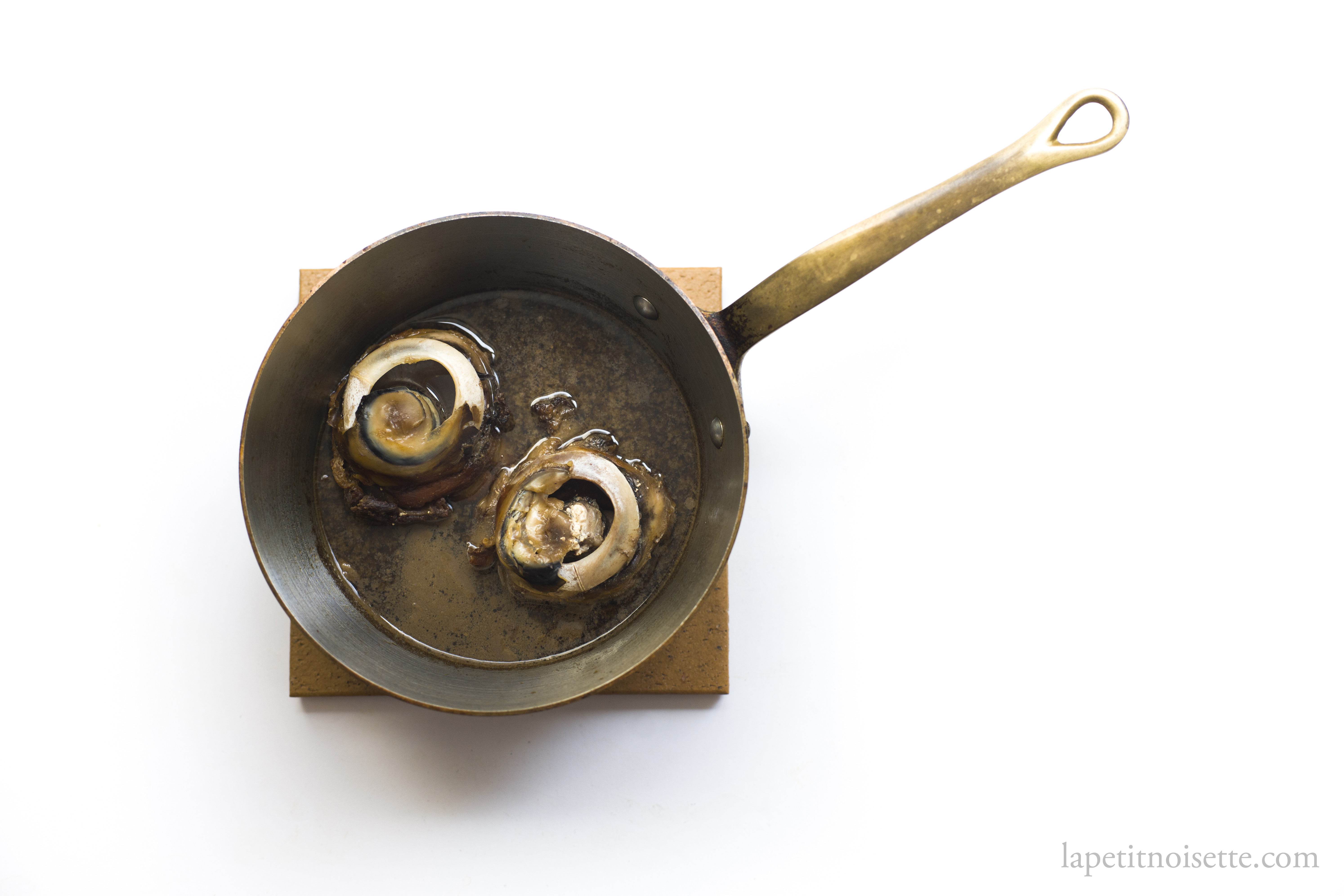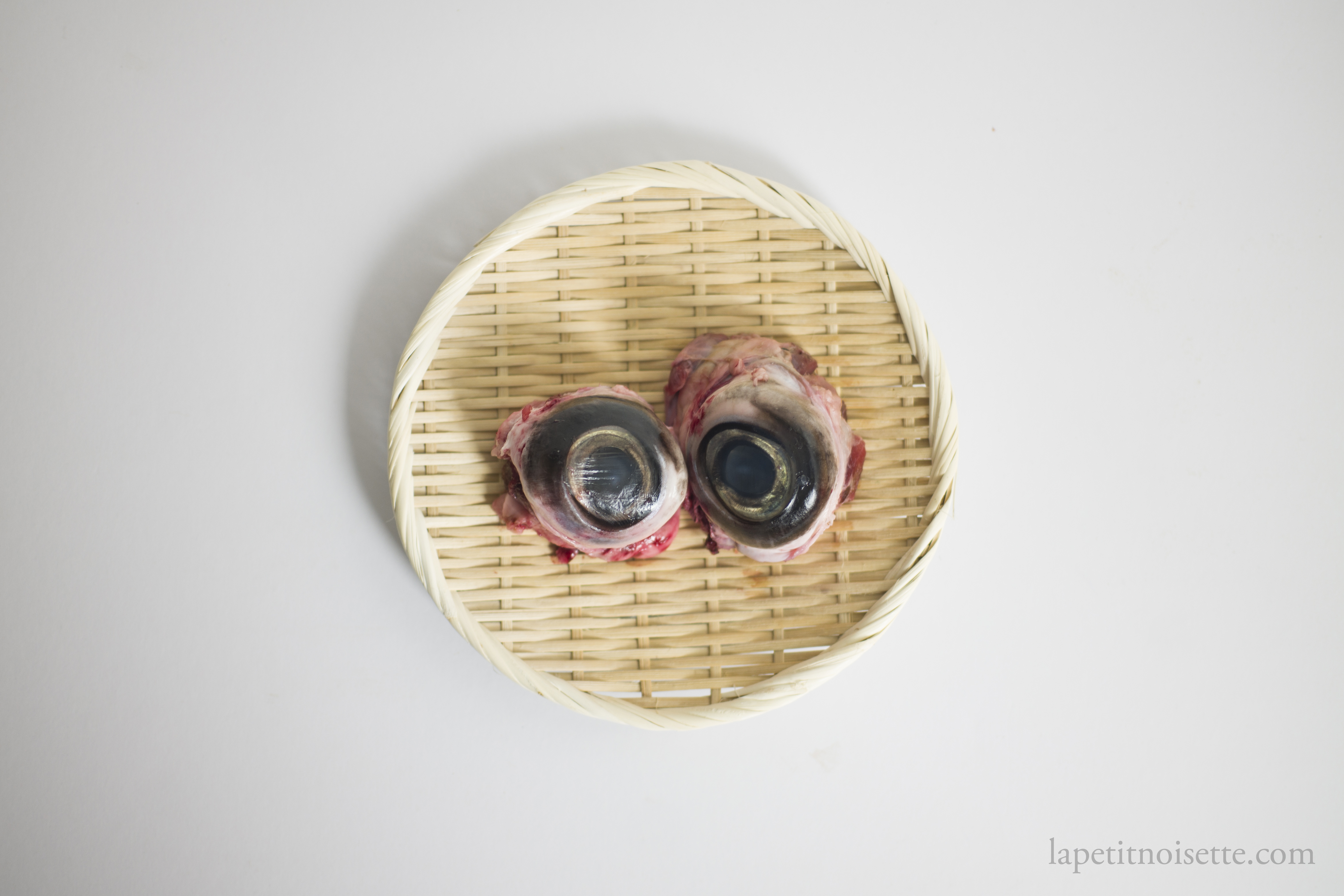*This article follows on from the article on how to break down a tuna head.
A dish not for everyone, eating fish eyes in general is a somewhat acquired taste that’s more common in asian and south-east asian culture. We never served this dish at the restaurant I worked at as it wasn’t considered a refined enough dish. However, it was always possible to buy on the cheap at the market whilst buying fish for the restaurant for a weeknight snack. Certain high end supermarkets that break down their own tuna instore will also occasionally stock them, but the main place you’ll find these are at restaurants that specialize in cooking tuna or occasionally on an izakaya menu.

There is a large amount of fish fat that surrounds the eyeballs, which melts into the simmering liquid when cooked, yielding an extremely rich sauce to spoon over rice. When cooked, The outer layer of the eyeball, known as the sclera becomes rubbery and chewy but acts like a cup to contain the cooked inner content of the eye. The sclera itself normally isn’t eaten because it isn’t a nice texture and neither is the solid eyeball. There aren’t any meaty parts in the eye to eat, so this dish pairs best with something more substantial, or even works as an extremely decadent tempura sauce.
This dish shares many similarities to simmered kinmedai head but it requires a much longer cooking time to break down the gelatinous eye. We also don’t add in the sake to reduce first before adding in the soy sauce, but instead just add everything into a pot and let it simmer. This dish is supposed to be simple and easy preparation.
In addition to this, I recommend cooking the tuna eyes in a small pot so that the liquid covers as much of the eyes as possible throughout the entire cooking duration. If possible, you’ll want to use a Japanese drop lid, or otoshibuta (落し蓋) which allows the boiling sauce to cover the tuna eyes as you cook them, so that the exposed surfaces of the eyes are still basted with sauce. A japanese drop lid is a lid that doesn’t cover the top of the pot, but sits inside the pot on top of the ingredients, preventing them from moving around whilst both deflecting the boiling liquid back onto the ingredients whilst allowing for some evaporation. If you don’t have one, simply fold a large sheet of aluminium into 2 layers and then fold into a disc with a diameter smaller than your pot so that it fits inside. Use a knife to poke several holes in the disc to allow some evaporation. This works with baking paper as well. If the water level in the pot looks a little too low, flip the eyes half way through the cooking process to ensure that they are cooked through. If the meat is still tough after cooking, simmer for an additional 5 minutes.

Soy Sauce Simmered Tuna Eyes
- 2 tuna eyes
- 200ml of dashi stock
- 50ml of soy sauce
- 30ml of sake
- 30ml of mirin
- 15g of thinly sliced ginger
Garnish
- Sansho pepper powder/kimone leaves/chives/white part of spring onions
Start by peeling your ginger and then thinly julienne-ing them. Blanch the tuna eyes in a pot of boiling water for around a minute to remove any impurities before straining them out. This is important or you’ll get a very fishy sauce. In a small pot, add the dashi, soy sauce, mirin, sake and ginger and bring to a boil. Once boiling, add in the tuna eyes and lower to a simmer. Place your otoshibuta (or aluminium foil) on the tuna eyes and simmer for 15 minutes. After 15 minutes, we need to simmer it for an additional 5 minutes. However, taste the sauce, if it’s too dilute, simmer the additional 5 minutes without the otoshibuta.
To make a more concentrated sauce, remove the fish eyes and reduce the sauce to desired consistency. Taste and adjust with salt after reducing before returning the fish eyes in the sauce to reheat. Serve with your choice of any of the garnishes listed above.